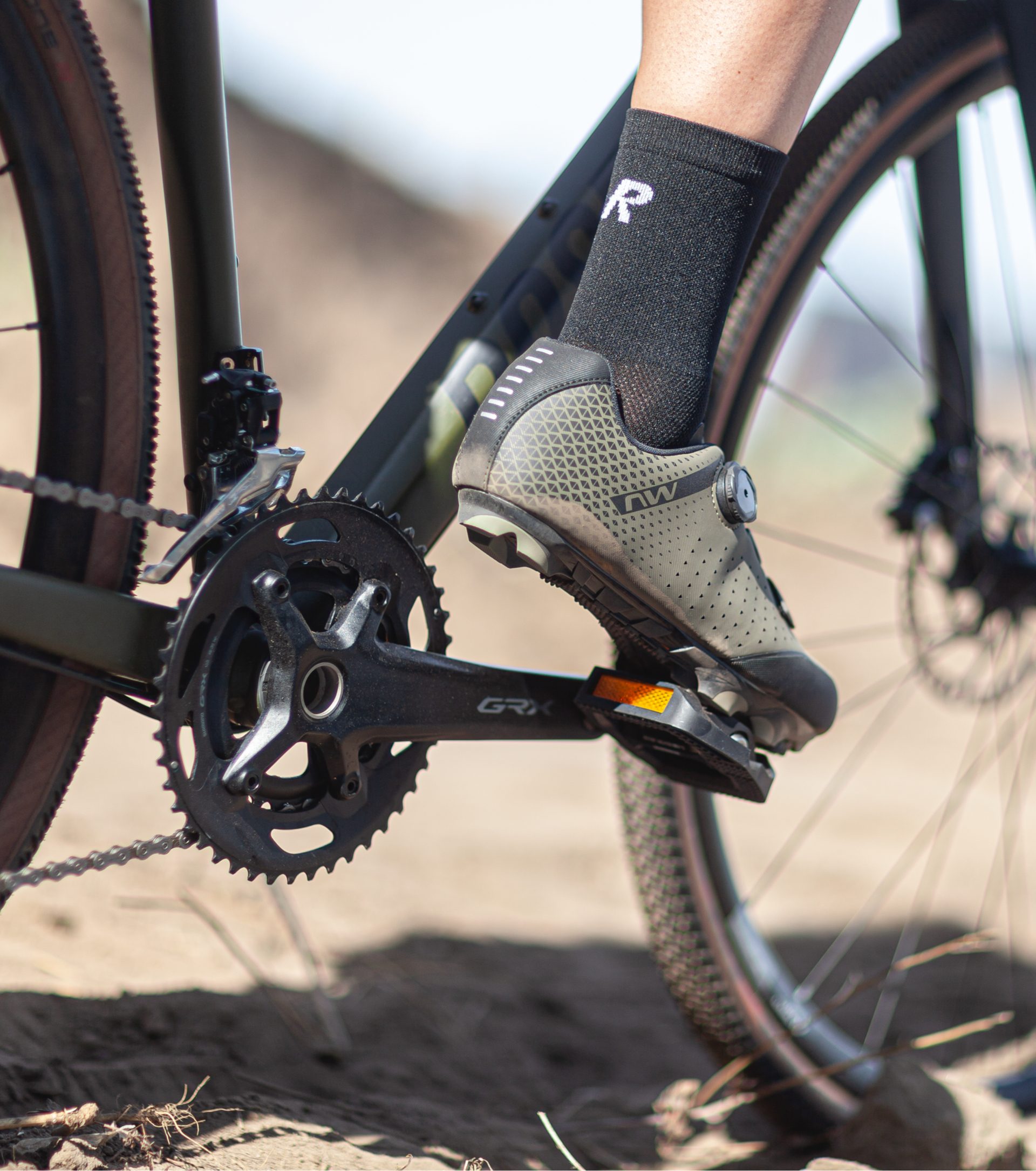)
Which gravel pedal should I choose?
Having the right
pedals is key to enjoying fast-paced gravel tours on unconquered trails. It is
one of the three points of contact with your gravel bike, so you should not
compromise when deciding on the right pedal.
There are a few
things to consider when choosing the right gravel pedals: Do you want maximum
mobility or efficient power transmission? Do you prefer technically challenging
off-road tracks or more relaxed gravel roads?
So that you are
equipped with the right pedals for your next adventure and off-road use, we
have put together a short guide with the most important facts for you.
Gravel Clipless Pedals
Maximum grip and
efficient power transmission – clipless pedals are firmly connected to the cycling
shoe. This means that you never lose contact with the pedals, even on difficult
and uneven terrain.
The firm
connection between foot and pedal ensures that more pedalling power
can be converted into speed. Especially during fast-paced sprints, you can
exert power over the entire crank revolution through the pulling
movement.
To be able to
use the click system, you need cleats that match the pedal and
compatible cycling shoes. All three parts must be compatible with the
corresponding pedal system. The gravel sector uses the same two-hole
standard used in the mountain bike sector. For the two-hole standard,
the cycling shoes must have two parallel holes in the sole.
The cleats are
the connecting pieces between the shoes and pedals. They are mounted on the
threaded plate on the sole of your gravel shoe.
This means that
your foot is always kept in the same ergonomic position that
you individually adjusted beforehand. You no longer have to correct or readjust
your foot position while riding your bike.
Thanks to the
so-called float angle, you have a certain degree of mobility when
gravelling.
)
Short Facts about Gravel Clipless Pedals
- Float angle:
This angle describes how far you can rotate your foot inwards or outwards while you are clicked into the pedal. In other words, the freedom of movement when clicked in.
- Release tension:
Indicates how much force is needed to release the shoe from the pedal. On many models, this can be adjusted individually. For beginners, a low release tension is recommended so you can quickly take the foot off the pedal in tricky situations.
- Release angle:
This is the angle you need to turn your foot outwards to come off the pedal. For beginners, a lower release angle is recommended to practise clicking out. The adjustment of the release depends on the click system and cleat used and is not always adjustable.
- Contact surface:
Indicates how much space you have on the pedal to place your foot. The larger the contact area, the better the power transmission
Click System Comparison
Gravel Duo Pedals
Flexibility and
versatility - duo pedals, also called combination pedals, can be
ridden on one side like a clipless pedal and on the other side
like a platform pedal. So you don't have to commit yourself right
away and can adapt the pedal individually to your needs.
This way you can
expand the range of use of your bike. That’s because you can use the duo pedals
with your normal road shoes, your gravel shoes as
well as special cycling shoes for clipless pedals. The
clipless pedal side of the duo pedal is always SHIMANO SPD compatible.
The combination
pedal is equally suitable for commuting on a gravel bike in everyday
life as well as for athletic rides in your free time.
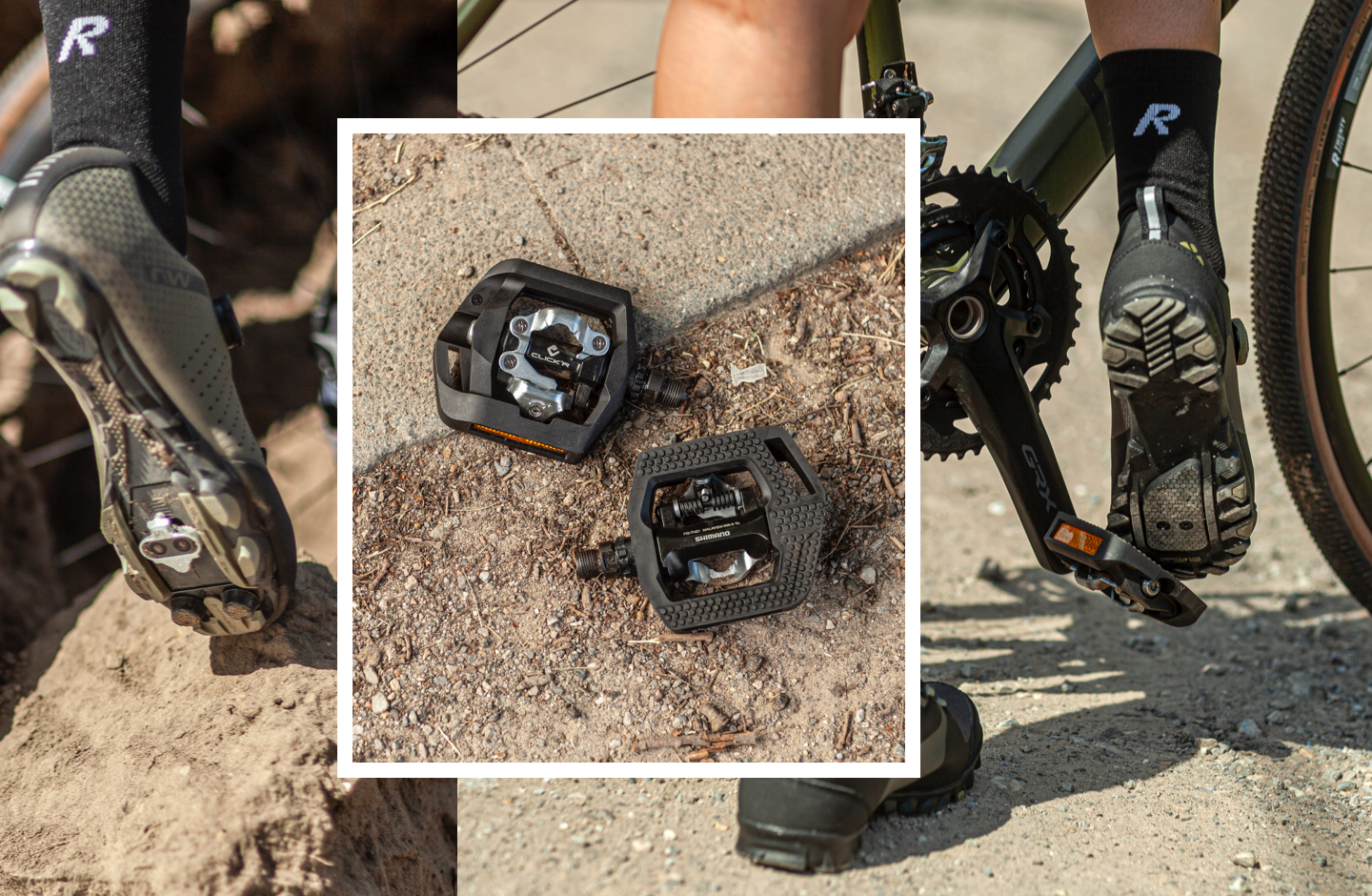)
Gravel Platform Pedals
The
platform pedal, also called flat pedal, scores points with its easy handling
and uncomplicated use.
Flat
pedals do not have a firm connection to the shoe. This means you can easily
ride with any type of road shoes, fitness shoes or special flat pedal cycling
shoes. No special equipment or accessories needed.
There
are clear advantages:
The
platform pedals allow you maximum mobility while riding and you can easily
adjust your foot position to the conditions of the terrain.
Thanks
to the roughened or rubberised surface of the pedals, you get the necessary
control during gravel rides.
The
large contact surface offers you a secure stand and additional grip.
For
even more grip, there are platform pedals that are equipped with pins. The pins
press into the sole of your shoe and provide sufficient grip even in wet
conditions.
)
)
;BackgroundColor=ffffff)
;BackgroundColor=ffffff)
;BackgroundColor=ffffff)
;BackgroundColor=ffffff)
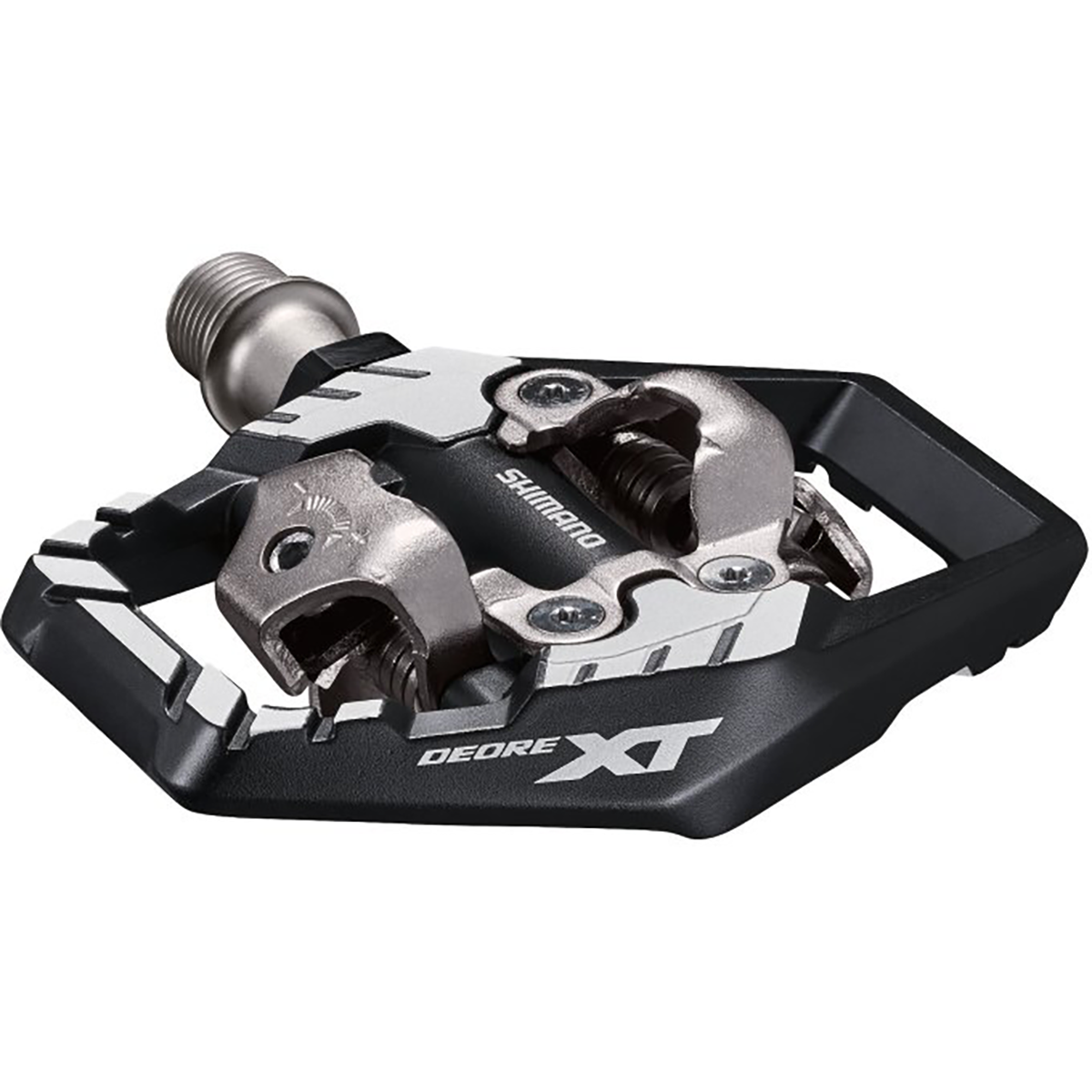;BackgroundColor=ffffff)
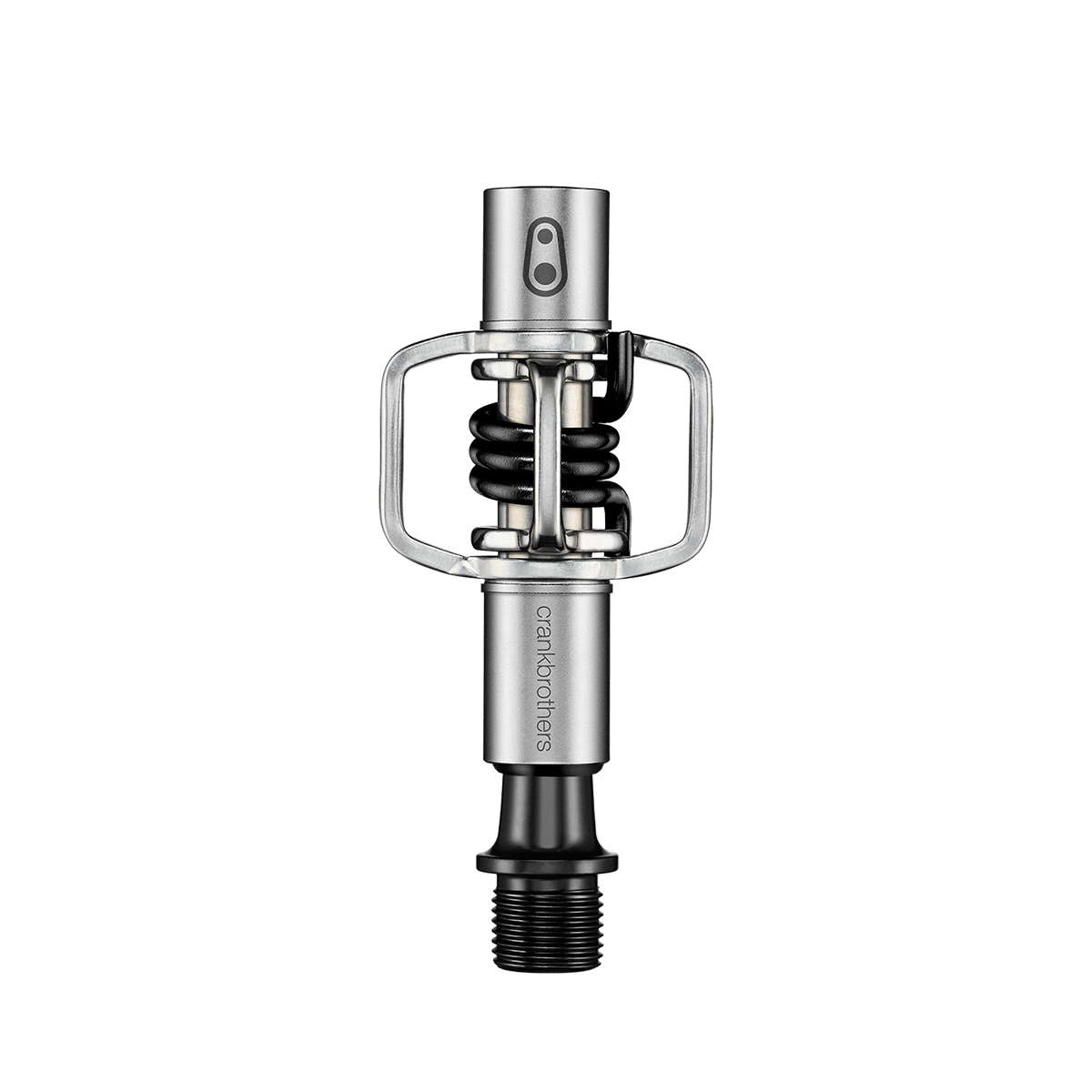;BackgroundColor=ffffff)
;BackgroundColor=ffffff)
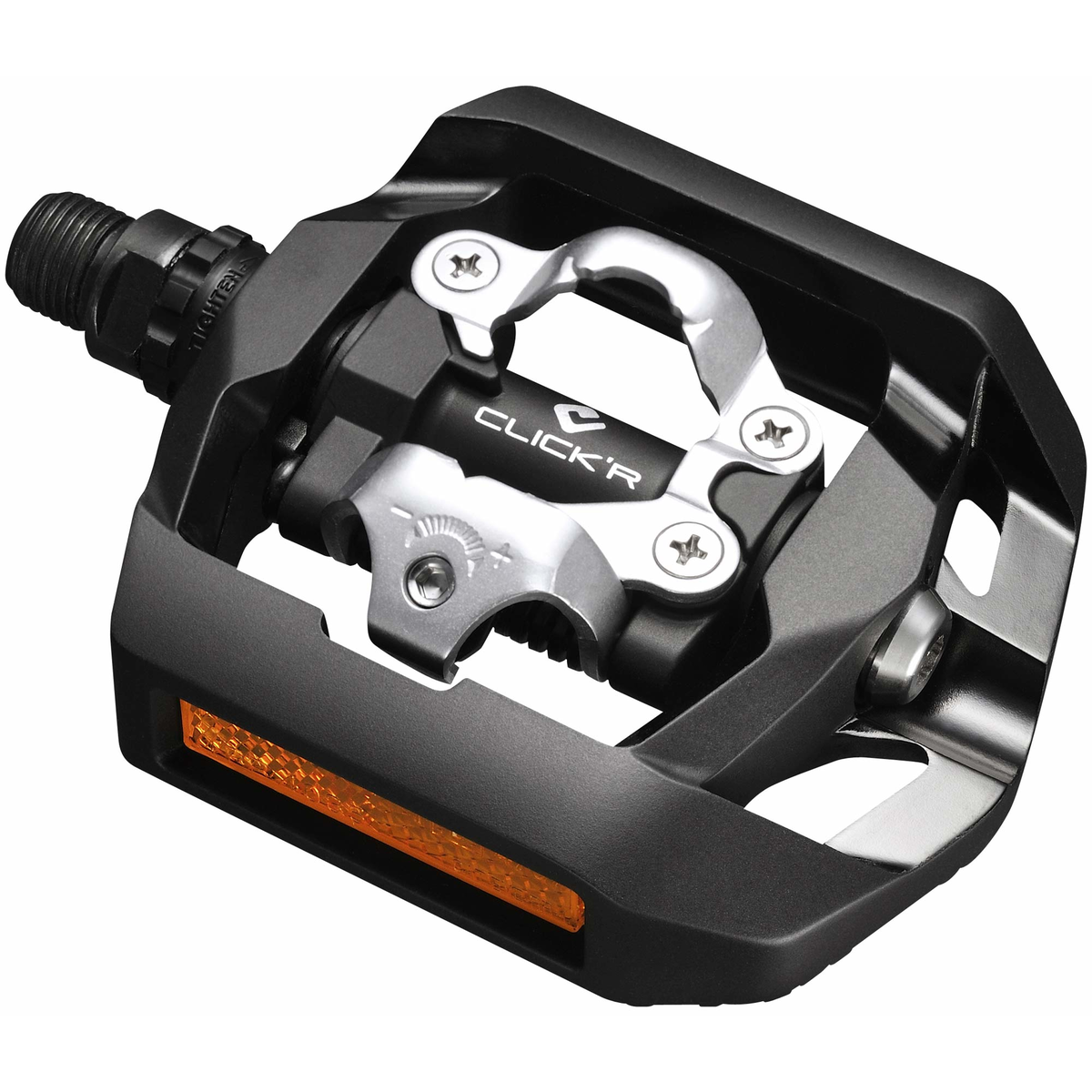;BackgroundColor=ffffff)
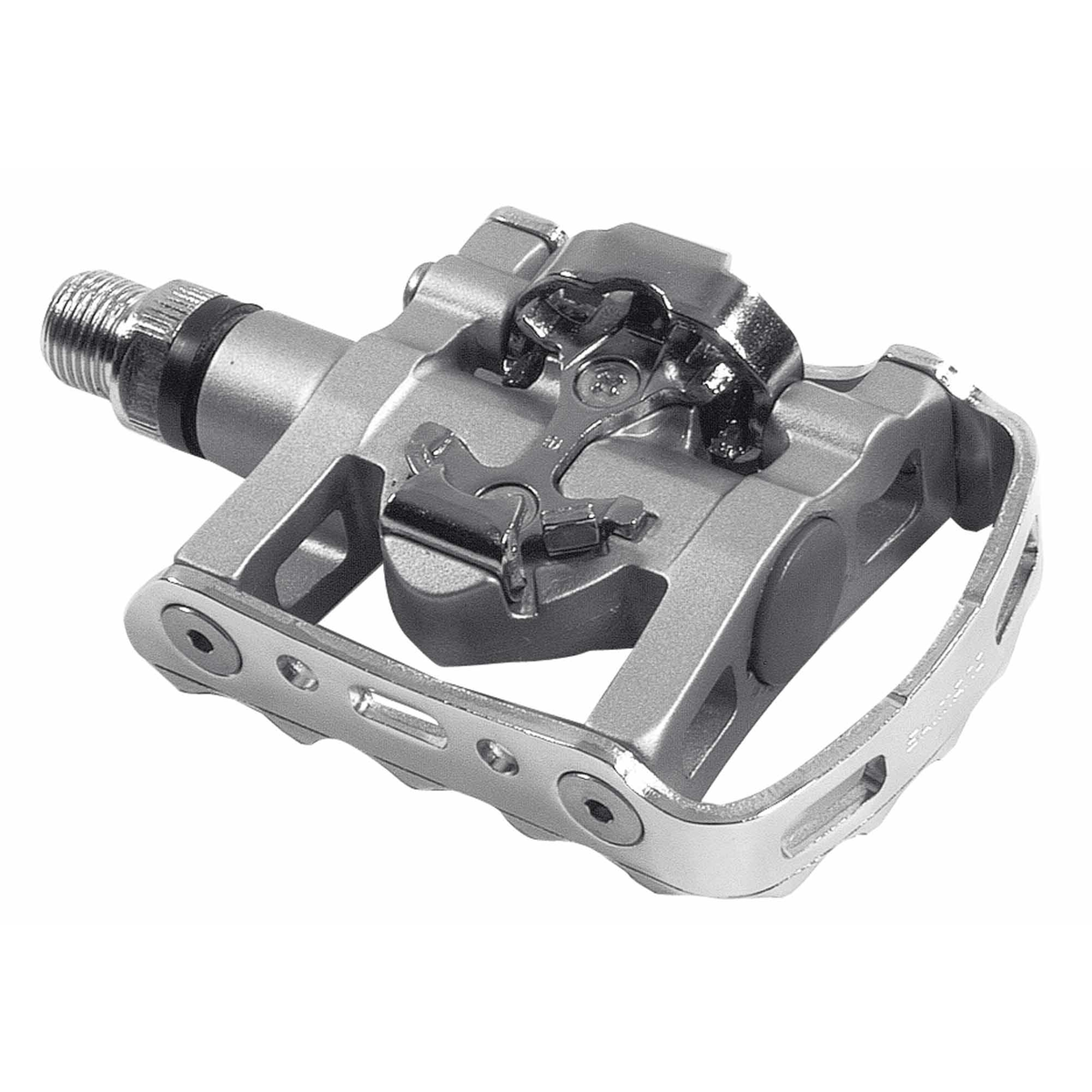;BackgroundColor=ffffff)
;BackgroundColor=ffffff)
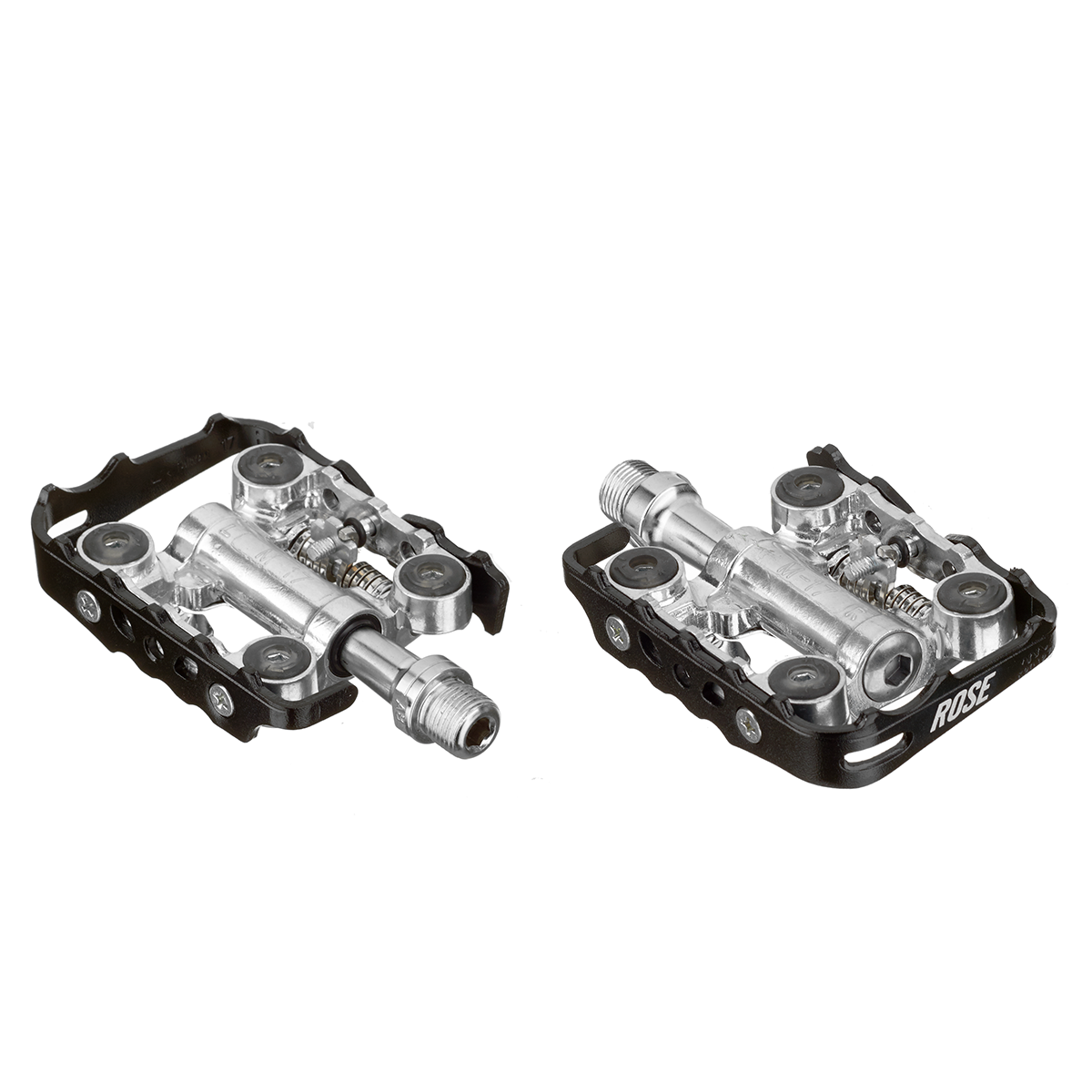;BackgroundColor=ffffff)
;BackgroundColor=ffffff)
;BackgroundColor=ffffff)
;BackgroundColor=ffffff)
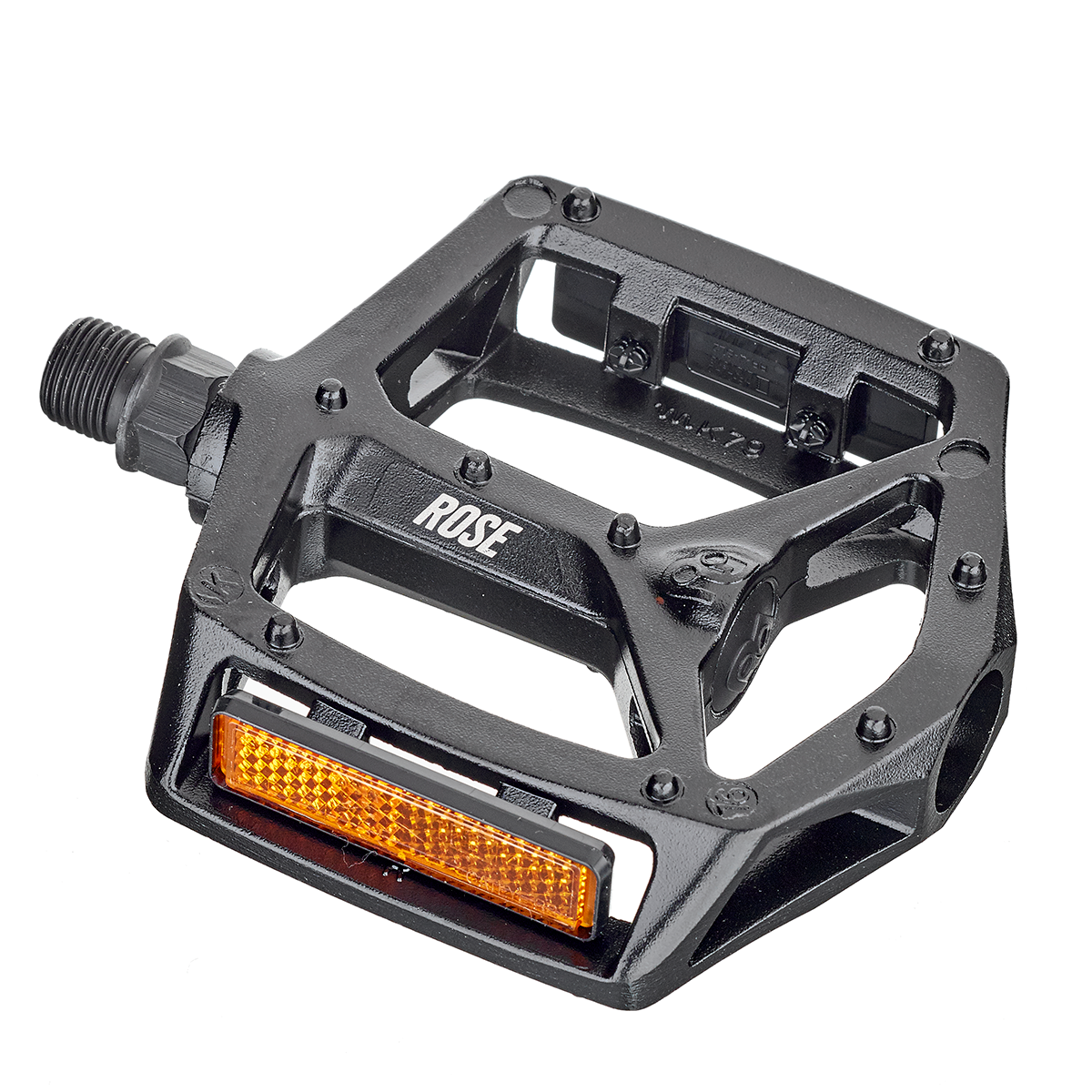;BackgroundColor=ffffff)
;BackgroundColor=ffffff)
;BackgroundColor=ffffff)
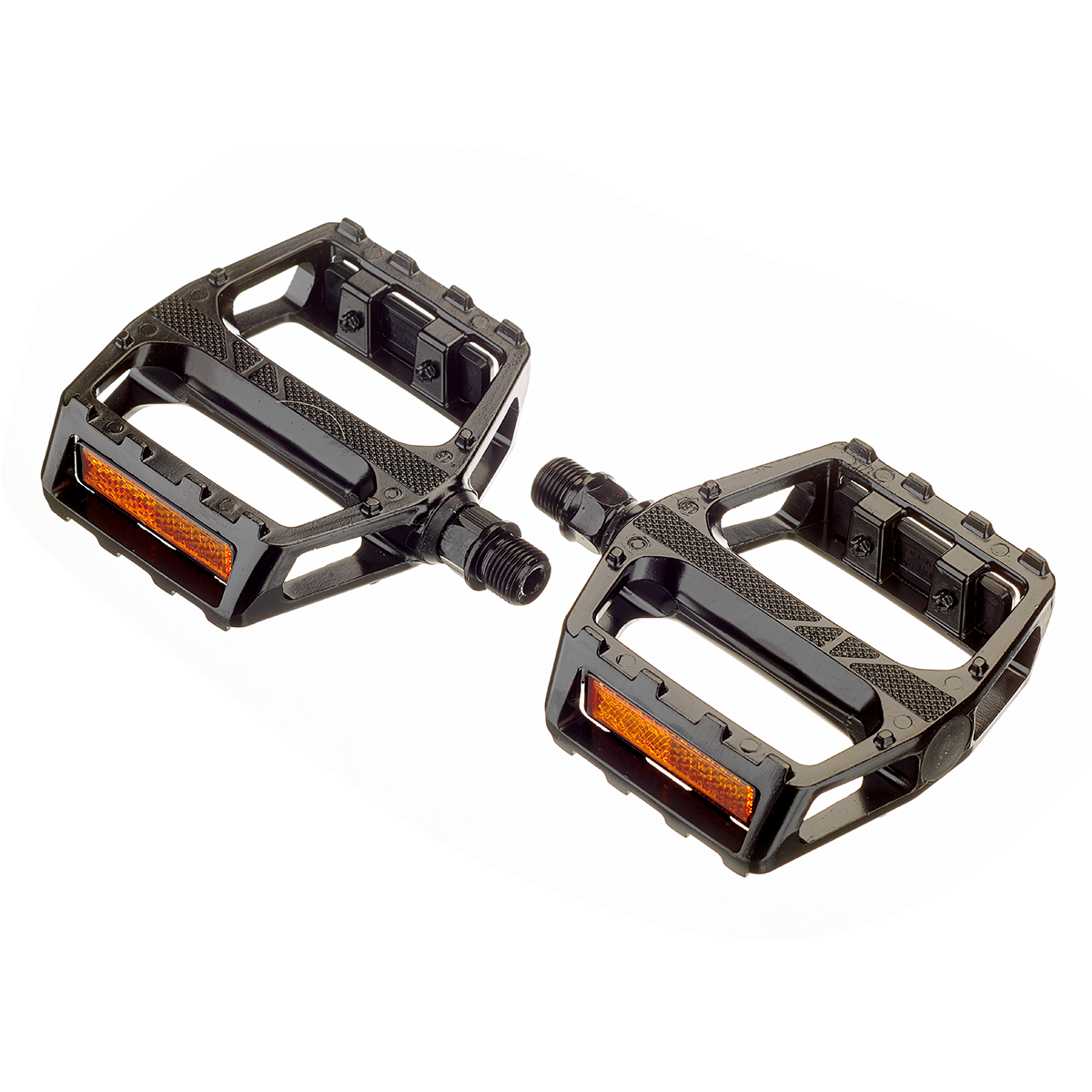;BackgroundColor=ffffff)
;BackgroundColor=ffffff)
;BackgroundColor=ffffff)
;BackgroundColor=ffffff)